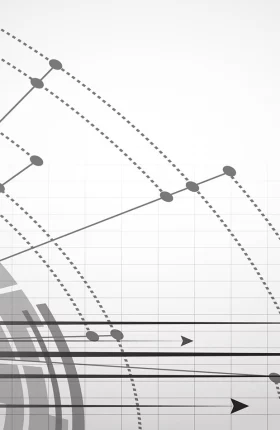Spend a minute with Jean-Pascal Tricoire, the chairman and CEO of Schneider Electric, as he describes the opportunities that digital technologies have opened up for his electrical-equipment company: “Connectivity is not new for us. We started to connect things to the internet in 1995. But what is happening today is that we are connecting from power plant to plug—everything connected to the internet. In a nutshell, all products will be connected, all the data is getting aggregated, and we are deploying analytics to automate or support decisions. We were coming from a customer relationship that used to focus on projects and service on demand. Now we stay connected 24-7. That means we can bring new value, new capabilities, and a lot of new
Tricoire told the Davos audience at the World Economic Forum’s 2016 meeting how Schneider Electric had transformed its R&D organization to add software and data analytics products and services to its customer offerings. He described how the company had set up an autonomous division for digital solutions that serve both Schneider Electric and third parties. He discussed how the development of software and analytic solutions required the company to change not only what it was doing in R&D but also how it was doing it. “Before, we used to make a spec and then spend two or three years on the product. Now, we have to go fast into the market with a minimum viable product.”
He also talked about partners: “When we went into digitization, we knew connectivity, and we knew software. But when you go to the cloud, you can’t do everything alone. Today’s world is very prone to partnerships—the big bets are about choosing the right partners. Your success depends on you, but also on the ecosystem you are choosing.”
Founded in 1836, Schneider Electric is today as much a digital business as any 21st-century high-tech company. As it proceeded to digitize, the company changed the design of the business on multiple dimensions. Management decided to connect as many products as possible to the internet, add information-based services to the customer offerings, adopt agile product development processes, establish a new digital services organization, and update the sales force’s interactions with customers. A successful old-line company transformed itself into a digital business.
Many companies that are facing digital disruption and considering digital transformation look to digital natives for models and roadmaps. But they can learn as much, or perhaps even more, from traditional companies, such as Schneider Electric, that have embraced and executed digital-induced transformation—some of them even before the phenomenon was well recognized. They can also learn from first-generation internet companies that have redesigned their business and operating models in order to stay relevant as their markets evolve. The experiences of these companies provide a new perspective on transformation and the design of digital organizations and provide lessons for companies not as far along the digital adoption curve.
A Wide Spectrum of Design
BCG and the MIT Center for Information Systems Research (CISR) mounted a two-year research project focused on designing digital organizations. We studied more than 40 companies, collaboratively and individually, in a number of industries. Some of the companies, such as Schneider Electric, had been established more than a century ago, while others were born in the 1980s and 1990s. The youngest company in our sample, Salesforce, was founded in 1999.
In terms of business and organization design , the companies we studied span a wide spectrum. At one end are companies such as Valve, a video game maker (Half-Life, Counter-Strike) that has a flat organization. Really flat. No one has a boss, and no one has a title. Employees spend 100% of their time on self-directed team-based projects. However, each team member always knows what his or her job is on any given day. As Valve’s employee handbook puts it, “Although people at Valve don’t have fixed job descriptions or limitations on the scope of their responsibility, they can and often do have clarity around the definition of their ‘job’ on any given day. They, along with their peers, effectively create a job description that fits the group’s goals. That description changes as requirements change, but the temporary structure provides a shared understanding of what to expect from each other. If someone moves to a different group or a team shifts its priorities, each person can take on a completely different role according to the new requirements.”
At the other end of the spectrum are companies that run according to highly formal and codified business systems that describe their operating models in great detail. These systems have, for example, detailed goals, objectives, plans, playbooks, role descriptions, policies, meeting agendas, and performance metrics. Procter & Gamble’s Integrated Work System specifies the amount of time a manager must be on the factory floor each day, what the agenda for a shift change meeting should be, and what activities a line operator must execute.
Researching the Next Release: Some Common Themes
The goal of the BCG-MIT research project was to gain an understanding of how successful companies of all stripes adapt to the digital economy. We heard a lot about how they had changed their product and service offerings and how the revised offerings affect their business and operating models. We also wanted to learn how companies design the “next release” of themselves. We asked the following questions:
- How does a company go about designing itself to become more digital?
- What particular management practices facilitate digital redesign?
- Which dimensions of a company’s operating model need to change in order to succeed digitally?
We observed a wide range of answers as well as some common themes.
One common theme: since the beginning of the current millennium, most of the successful companies we studied had already gone through some form of major business transformation, typically redesigning their internal operating models. They had pulled numerous activities from business units and local offices and had placed these activities in new shared-service organizations. They had designed and deployed global business processes, supported by common finance, human capital management, customer relationship management, and supply chain software packages. They had reorganized product-oriented business units—in many cases, removing the sales and marketing functions and placing them in industry- or location-aligned units. The companies had also outsourced activities or moved them to captive offshore units.
A second common theme: just about all these transformations had focused exclusively on the company’s inner workings. Many of the transformation program leaders had used a people-process-technology framework to manage and coordinate changes. In the people dimension, companies redesigned internal organization structures, roles, performance metrics, and incentive systems. Core business processes were revamped end-to-end to make them more efficient or, in some cases, outsourced. In the technology area, companies made design changes to core business transaction applications, data warehouses, business intelligence tools, and the technology infrastructure.
Although these companies were transforming themselves with the help of information technologies, they did not necessarily use or take into account then-emerging digital technologies, such as social networks, mobile communications, big data analytics, robotics, cloud computing, and the Internet of Things. For the most part, customer offerings and business models were left untouched. And it is not surprising that, around 2012, the leaders of many of these recently transformed (or still-transforming) companies were stunned to discover that to become digital businesses, they would have to undergo another total transformation.
The one big difference—and advantage—for them was that successful internal transformations provided stable operating platforms upon which digital services could be built. Companies that had not participated in the first wave of transformation faced the need to transform many more design dimensions—and as soon as possible.
How Are Digital Businesses Different?
For the most part, the companies we studied use new digital technologies in two ways, often simultaneously. First, they bake digital technologies into their products and services. For example, Schneider Electric, John Deere, and the Schindler Group (a manufacturer of elevators, escalators, and moving walkways) are able to employ many types of new information-based services, analytics, and insights by adding internet-connected devices, such as sensors, microprocessors, radios, and GPS locators, to their products. In some cases, digital data has led to new disciplines, such as precision farming, and new ecosystems, such as communities of customers developing answers to common questions.
Second, interactions involving customers, employees, business partners, suppliers, investors, and regulators, are increasingly digital. For example, wherever practical, the managed-care consortium Kaiser Permanente gives patients access to doctors through the internet rather than requiring in-person visits.
Both types of digital application may seem simple, but each requires substantial redesign of business and operating models. Indeed, the companies we studied made explicit design changes in five separate dimensions of their businesses: customer experience, product and service offerings, ecosystems, control and alignment mechanisms, and ways of working.
Customer Experience
Asked to name the most important change they could apply to their business, many companies cited the need to make the customer experience more digital. In fact, in many cases, the companies started the redesign of their business and operating models by reimagining the customer experience. Another participant in the Davos panel, Kaiser Permanente CEO Bernard Tyson, described the profound change that has resulted from the company’s use of analytics to improve customer engagement. These steps include providing online access to medical records and enabling transactional capabilities and secure interactions with physicians.
The following characteristics shape the ways that digital companies address the customer experience:
- Digital companies address the total customer experience. The scope of the design changes includes all customer journeys (for example, learning, buying, provisioning, using, billing, paying, and support). It crosses all business units, product and service lines, and channels. If an ecosystem of partners provides the experience, the design changes are applied to all participants.
- Digital companies integrate digital and physical elements. The target design includes experiences that are both completely digital (such as streaming a Netflix show) and partly digital and partly physical (for example, using a mobile app to refill a prescription and then picking up the medicine at a pharmacy).
- The customer experience becomes the primary driver of product and service design. Companies actively coordinate the design of products and services with the design of the customer experience. Some, such as the financial services company USAA, reorganize the entire product and service mix, transitioning from product silos (for example, insurance policies and mortgages) to customer life events (such as the birth of a child or the move to a new house).
- They rely on ready access to customer data. All the company’s data on customers and the customer experience (of individual customers as well as groups of similar customers) is made available throughout the company and used to tailor the customer experience. Data includes previous encounters and interactions, products and services used, and information sourced from third parties, such as partners and social media.
- They use state-of-the-art digital interface design. From the point of view of customers in any industry, the digital aspects of the experience need to be as smooth and easy as the best digital experiences served up by the likes of Amazon and Apple. They also need to work consistently across all devices, including mobile phones, tablets, computers, kiosks, set-top boxes, and automobile multimedia systems.
- They exploit social media and communities. Digital companies create customer communities on social media sites such as Facebook and LinkedIn, which allow customers to interact with them and with each other. And companies can learn and collect data from such interactions. Some companies create communities specifically for their customers: for example, Intuit provides TurboTax AnswerXchange, and John Deere offers YouTube videos.
Product and Service Offerings
The design of a company’s products and services receives almost as much attention as the design of the customer experience. Today’s complicated physical and mechanical products (such as agricultural equipment, automobiles, and electric power management systems) incorporate sensors, microprocessors, data storage devices, and connectivity to the internet through wired and wireless networks. Companies have expanded their offerings to include remote monitoring and services that are based on data collection and data analytics. Many are moving from selling products to selling solutions.
Consider John Deere’s 8R/8RT series tractor. Working with a 24-row ExactEmerge planter, it can move at ten miles per hour, planting 80 seeds per second at the precise seed depth and spacing required. The tractor has 20 processors and more than 6 million lines of code. The planter has 77 processors and sends data to the tractor cab and, from there, to the John Deere Operations Center hosted on the Amazon Web Services cloud. The tractor operator and the remote farm manager can see this data in real time and make necessary adjustments. The machines can also communicate with one another and automatically coordinate the work in the field. “The ability to have data anywhere, anytime, at a much lower cost, at a much faster speed, and on a much higher scale and level of flexibility provides significant opportunities for us,” says Patrick Pinkston, a former John Deere vice president. “I call it the agricultural technology evolution. And when you mash that into ag science, you’ve got a real opportunity to truly transform agriculture going forward.”
Ecosystems
Ecosystem design is another important dimension of digital businesses. Amazon, eBay, and Apple were among the first to recognize the power of ecosystems. Company executives at Schneider Electric realized that they needed to design a partner ecosystem. Ecosystem members can include customers, suppliers, business partners, and researchers.
In 2011, Intuit, a company that had been “born digital” in 1983, embarked on a multiyear transformation, creating a new operating model that was based on interconnected services for customer ecosystems. Michele Iacovone, senior vice president and chief architect, describes what happened next: “As the company started to move from desktop to software-as-a-service (SaaS), and now clearly and aggressively mov[ed] towards [the] cloud, the realization has increasingly become that we couldn’t operate successfully as a series of portfolio business units. Rather, we needed to get synergy across all of our major customer bases and constituents. It was really, really important, and ultimately it’s what we believed would fuel the growth of the company. So we’ve been, over the last four and a half years, moving from what we call being a portfolio company to an ecosystem. And the ecosystem is really centered on three kinds of core stakeholders: our small-business customers, accountants, and consumers. It is a radical transformation.”
By 2015, Intuit had connected its customers with other customers, accountants, and tax preparers through Intuit communities, question-and-answer exchanges, and blogs. Intuit is now using these connected services as a platform, along with its software products, to drive the ecosystem and help the company leverage the “network effect” by making knowledge gained by one individual accessible to everyone else in the network.
John Deere leaders recognized that connecting its machines and the farmers that use them to data and software beyond what Deere was able to offer on its own could help farmers significantly improve their businesses. SaaS agricultural applications, such as Climate Cloud, were becoming available and so were big data applications for topics such as weather forecasting, plant genomics, and agronomic studies. The company expanded its offerings by making its own software available to third-party solutions, leading to a more comprehensive set of services that help farmers. The ecosystem includes farmers, John Deere dealers, software companies, seed and fertilizer manufacturers, and university researchers.
Control and Alignment Mechanisms
Many of the companies we studied have formal planning, control, and alignment mechanisms for developing overall strategies, setting goals and objectives, and ensuring that decisions made at all levels of the organization are in sync with the strategies and with each other. As companies rely less on formal corporate hierarchies for command and control, these mechanisms need to be adapted for a flatter, more collaborative working environment.
Since 1999, Salesforce has embraced a mechanism called V2MOM (vision, value, methods, obstacles, and measures), which guides management thinking on achieving objectives and helps employees focus on their individual goals and expectations in the context of the organization’s goals.
Marc Benioff, one of the founders of Salesforce, developed V2MOM and has referred to it as a secret management process that helped the company achieve a high level of organization alignment and communication while growing at breakneck speed. He wrote in his book, Behind the Cloud, “At Salesforce.com, everything we do in terms of organizational management is based on our V2MOM. It is the core way we run our business; it allows us to define our goals and organize a principled way to execute them; and it takes into consideration our constant drive to evolve. The collaborative construct works especially well for a fast-paced environment. It is challenging for every company to find a way to maintain a cohesive direction against a backdrop that is constantly changing, but V2MOM is the glue that binds us together.”
As the CEO of Salesforce, Benioff defines the top level V2MOM for the company on the basis of input from the management team. His direct reports then create their own V2MOMs, which are in sync with Benioff’s. The process cascades down to individual contributors—everybody does a V2MOM. At each level, the methods and measures are negotiated by an employee and his or her manager. In general, major decisions about what to do are made at the top, but deciding how to execute is determined throughout the organization.
Ways of Working
Several of the companies in our study are specifically changing what they call their ways of working, which relate as much to company culture and organization as to business process reengineering. Ways of working describe how people in the company work together, without specifying inputs, activities, cycle times, or outputs.
Speed is the key factor that companies need to consider: digital organizations move fast. In large and complex companies, this means reducing reliance on hierarchies, and leveling hierarchies requires reliance on collaboration. For many companies, this is a big organizational and cultural change, and implementation is difficult. Companies that get it right design guidelines at the top, which establish the boundaries within which empowered employees can collaborate and make great things happen.
The most common new approach is to adopt at least some aspects of the agile methodology. Agile ways of working include multidisciplinary teams, short sprints to accomplish something valuable, new roles such as “scrum master” and “product owner,” and other design features that differ in concept and approach from traditional ways of working, especially in large organizations. We have observed that rather than impose specific methodologies, many large companies apply agile’s general principles, paying special attention to the integration of agile teams into the rest of the organization. When large companies get agile right, the results can be impressive. Productivity can improve by a factor of three. Employee engagement, measured in quantitative surveys, increases dramatically, too. New product features are ready for release within weeks or months rather than quarters or years. Rates of innovation rise, while the number of defects and do-overs declines. As companies apply agile principles to activities other than software development, agile can become a journey of continuous improvement. (See “ Five Secrets to Scaling Up Agile ,” BCG article, February 2016.)
Becoming more collaborative is another goal of a new way of working. For example, Salesforce encourages massive collaboration using both digital and physical means. The company is organized in a traditional pyramid, but it operates like a very flat organization. There is no expectation that work will get done through a command-and-control hierarchy. The top three or four layers act as a network. All employees are expected to collaborate in order to help one another meet the expectations in their V2MOMs. John Wookey, the executive vice president of industry applications, says, “I report to the president, but I also report to our product lead because I am building products. I meet with the person who runs services every two weeks. Employees on my team sit in on the staff meetings for some of the sales organizations. I sit in on the staff meeting the head of cloud services has each week. There is a hierarchy, but in practice, it is more of a network.”
Lean approaches and methodologies also have an impact. Although it is already a large company, Intuit has embraced the “lean startup” way of working. Detailed by Eric Ries in his book, The Lean Startup: How Today’s Entrepreneurs Use Continuous Innovation to Create Radically Successful Businesses, this way of working “provides a scientific approach to creating and managing startups and getting a desired product to customers’ hands faster.”
Several of the companies we studied focused specifically on changing their cultures. Near the beginning of Intuit’s transformation to an ecosystem-focused company, CEO Brad Smith decided that a “refresh” of the Intuit culture and values would help bring the right focus to the change journey. One of the values he stressed was winning together, which for Intuit was to be quite different from winning within the business units because the ecosystems they wanted to build and support cross business units and product lines.
Once each month, Smith sponsors One Intuit Forums, through which the company’s top 400 leaders participate in a 90-minute videoconference. Each meeting includes CEO remarks—Smith’s teachable points of view or recent external learning. His remarks are followed by a high-level review of company performance that considers key stakeholders—employees, customers, partners, and shareholders—and takes a detailed look at one of the company’s six strategic priorities. Each Forum drives shared consciousness and accountability across the company, and the 400 leaders are expected to pass this along to their teams.
At Davos, Marc Benioff pointed to Klaus Schwab’s book, The Fourth Industrial Revolution, and told the audience that the fourth industrial revolution starts with one very important point—trust. He argued that employees need to realize that customers will not buy a company’s products unless they trust the company. This, he stressed, will be a big change. “You are about to define a new level of trust between yourself and your employees, between yourself and your customers, between yourself and your key stakeholders and shareholders, and … between you and your partners. This is a cultural revolution for organizations that are not built on trust. Because when we talk about trust, talk about growth, and talk about innovation, we have to talk about them in that order,” he said.
How Should Companies Approach Digital Business Design?
There is no one right digital business design. But, because digital businesses are more integrated and automated than traditional businesses, they must be more explicitly designed, even if the design is seemingly as light-handed as establishing guidelines within which customer-focused innovation takes place. Digital businesses are heavily dependent on software to facilitate seamless end-to-end experiences; store, process, and analyze data; and bring new products and services to market. As a result, companies need to be designed with the same kind of detailed attention to component interaction that is applied in complex-system design—think computers, enterprise-resource-planning software suites, oil refineries, and transportation systems, for example.
The design of a digital organization starts with a digital business strategy. Because digital technologies offer a constant stream of new opportunities, the best digital strategies provide a clear direction while remaining responsive to shifting circumstances and prospects. As a result, digital strategies tend to be more visionary than traditional business strategies.
Intuit, for example, has redefined itself: originally, a desktop software company with multiple, independent products, the company now offers connected services for both individuals and small businesses. Management uses the capabilities of the cloud, mobile technologies, and data analytics to fulfill the company’s stated strategy: “We simplify the business of life.” Similarly, John Deere is transforming itself from a company that sells and services big equipment to a company “committed to those linked to the land.” This commitment recognizes the opportunities presented by new technologies and data-centric capabilities to help farmers find more efficient ways to grow
Such visionary strategies provide direction to leaders aiming for agreement on the most valuable applications of digital technologies. They help everyone in the company recognize opportunities to fulfill the vision and avoid the tendency to pursue technology only for the sake of technology.
Once a company has committed itself to a digital strategy or vision, management must define and implement an operating model that allows for execution of that strategy. The operating model incorporates traditional considerations such as policies, processes, organization structures, and performance measures. But it also adds the design dimensions we have discussed above: customer experience, product and service offerings, ecosystems, control and alignment mechanisms, and ways of working. One particularly important element is clear accountability for the delivery and operation of software modules that can interoperate and manage large amounts of data. As businesses become software driven, they need talent and processes to manage the complexity of integrated systems, as well as massive amounts of data. A well-designed operating model makes it easier for companies to develop or acquire critical skills and focus management efforts.
Some companies design their extremely detailed operating models with a high degree of centralization and integration. These companies typically have a central group of people in charge of the design changes. For some, that is the senior leadership team, but for others, a business transformation or business architecture team is in charge. Techniques used in operating-model design include business design blueprints and multiyear roadmaps.
Other companies design high-level policies and guidelines to direct the efforts of hundreds (or even thousands) of managers and experts as they adjust the design of small pieces of the business. The companies we studied take steps to ensure transparency, alignment, and collaborative ways of working. They also make sure that local design decisions are in sync with the company strategy and that conflicting design decisions are spotted early and resolved quickly.
No matter which approach a company takes, the senior management team needs to clearly articulate the strategy and the operating model and encourage everyone in the company to take responsibility for business success.
At Schneider Electric, Hervé Coureil, the chief information officer, was asked to coordinate the design and evolution of a new operating model. Coureil does not have a big group of architects or designers working for him. He works with two people, who, with him, act as catalysts. He describes the rationale behind this approach: “The reason I didn’t want a team was that if you do it yourself, the businesses will not feel accountable. So I needed to work more as an orchestrator. The business leaders need to design their operating models, but we need some central thinking about how the design of all those businesses would impact Schneider on the whole and how we could purposefully create commonalities across the business to gain more scale.”
Since 2013, Coureil and his colleagues have orchestrated the design of the new operating model by defining and documenting, for instance, business models, company culture, organization structures, roles, decision rights, and handoffs. Many of the business and operating model changes at Schneider Electric involved the existing businesses, countries, and corporate functions. However, the need to move toward digital services combined with physical products led the company to create two new organization units: Digital Customer Experience and Digital Services.
In summary, management must do three things to design a successful digital business:
- Develop a visionary business strategy that guides efforts to apply digital technologies to customer needs.
- Assess gaps in the company’s existing operating model to identify necessary changes in roles, processes, and ways of managing and working, and develop an ecosystem that will enable execution of the strategy.
- Assign a team responsibility for ownership of the design changes and implementation oversight.
To ensure the success of new operating-model initiatives, management also needs to continually collect feedback from the entire organization. The feedback will help the design team make adjustments and smooth rough edges. Companies need to use the same test-and-learn approach to continuous improvement that is commonly associated with product and service design. In doing so, they will discover what makes them great and how to succeed in the digital economy.
Acknowledgments
The authors are grateful to numerous colleagues for their work on the research project that led to this report and for their contributions to the report itself. In particular, they want to thank Benjamin Rehberg, Massimo Russo, Jérôme Moreau, and Manish Dabas of BCG; Ina Sebastian and Kate Moloney of MIT CISR; Martin Mocker of Reutlingen University; and Cynthia Beath of the University of Texas at Austin.
The authors thank Astrid Blumstengel for her help in coordinating the report and David Duffy for his writing assistance. They are grateful to Katherine Andrews, Gary Callahan, Elyse Friedman, Kim Friedman, Abby Garland, and Sara Strassenreiter for their contributions to its editing, design, and production.






